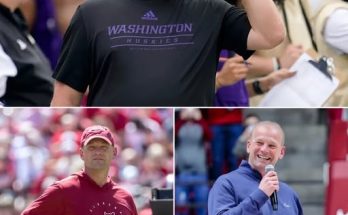How Much Salary Cap Space Can Miami Dolphins Create Without Manipulating Their Biggest Contracts?
The Miami Dolphins are in a delicate financial position as they look to build a Super Bowl contender. With a rising roster of talented players, including star quarterback Tua Tagovailoa, dynamic wide receiver Tyreek Hill, and explosive defensive players like Jalen Ramsey, the Dolphins have some big contracts to manage. However, even without restructuring their biggest contracts, Miami could still free up significant salary cap space for the upcoming season.
In the NFL, teams are given a salary cap—the maximum amount they are allowed to spend on player salaries for a given season. As teams move closer to the salary cap limit, they must either find ways to create cap space or let go of players to avoid penalties for exceeding the cap. The Dolphins are currently in a competitive window, but managing their cap while keeping key players is essential.
Here’s an analysis of how much cap space the Dolphins can create without touching their biggest contracts and manipulating them through restructuring or other methods.
Step 1: Understanding the Dolphins’ Current Cap Situation
To begin, let’s look at the 2025 salary cap situation for the Miami Dolphins. As of February 2025, the Dolphins are currently projected to have a salary cap of $224.8 million, according to the latest reports. However, they also have some key contracts that are significantly larger than others.
While Tua Tagovailoa, Tyreek Hill, Jalen Ramsey, and other major names represent a significant portion of Miami’s total cap hit, the Dolphins can still make room by addressing their smaller contracts, cutting unnecessary depth players, or even parting ways with players who aren’t essential to the team’s future success.
Step 2: Identifying Smaller Contracts for Potential Cap Space
The Dolphins have several contracts that are not as high in value, but which can still provide cap relief if adjusted or moved off the books. Let’s break down some positions and options that may free up cap space:
1. Releasing Non-Essential Players
The Dolphins could look to cut players who don’t play pivotal roles on the team. By parting ways with depth players who may not be contributing as much, they could create space. For instance, the Dolphins could consider releasing a veteran player with a low cap hit but high dead money. Even without restructuring contracts, these moves could free up a few million in cap space.
Example: Running backs and offensive linemen who have smaller contracts could be moved in favor of younger players or players on cheaper deals. This would reduce the need for higher-priced veterans.
2. Designating Players for Post-June 1 Cuts
Another way the Dolphins can create salary cap space without manipulating big contracts is by utilizing the post-June 1 cut rule. Under this rule, teams can designate a player to be cut after June 1, which allows them to spread the cap hit over two seasons rather than absorbing the full cost in one. This strategy is especially useful for veterans who have a significant dead cap hit if released earlier.
While this doesn’t provide immediate cap space in the current year, it does give teams flexibility. For example, releasing a veteran after June 1 could free up more space for signing free agents or managing other financial concerns while easing the long-term cap burden.
3. Reworking Rookie Contracts
The Dolphins may also choose to adjust their rookie contracts for players who haven’t yet reached their full potential or aren’t currently contributing at a high level. However, rookie contracts are generally more team-friendly, so the amount of space gained from these adjustments might not be substantial.
4. Trading or Releasing Players with High Base Salaries
The Dolphins may also consider trading or releasing players who are underperforming relative to their salaries. For instance, defensive players with high salaries but lower-than-expected performance could be trade candidates. Trading a high-salaried player could bring in cap relief while allowing Miami to acquire draft picks or younger talent in exchange.
Step 3: Possible Ways to Free Up More Space Without Restructuring Big Contracts
While restructuring contracts of star players like Tyreek Hill and Tua Tagovailoa would generate significant immediate cap space, let’s explore what Miami could do without touching those contracts directly:
1. Converting Base Salaries to Signing Bonuses
While this option does involve adjusting contracts, it does not require restructuring the entire deal. Converting base salaries into signing bonuses for players on manageable deals (or veterans with lower salaries) can free up cap space in the short term. This method spreads the cap hit out over multiple years, which could give the Dolphins the flexibility they need for the current season.
2. Reducing Salaries of Non-Vital Players
Miami could approach players with high cap hits but low production and ask them to reduce their salary or accept a smaller contract. This is a delicate maneuver, and such conversations often depend on the player’s willingness to stay with the team for a reduced salary. While it’s not always effective, it’s an option that can be explored with key backups or players who are at the end of their careers.
Step 4: Projected Cap Space Without Major Manipulation
Given all of the above factors, Miami Dolphins can realistically expect to free up anywhere between $10 million to $20 million in cap space without directly manipulating their biggest contracts, such as Tyreek Hill’s deal, Tua Tagovailoa’s extension, or Jalen Ramsey’s high salary. The methods above—such as cutting depth players, utilizing the post-June 1 rule, and releasing underperforming veterans—would allow them to stay within the cap while leaving their star players untouched.
This amount of cap space may not be enough for a blockbuster move, but it’s more than sufficient to make smaller moves in free agency, sign practice squad players, or make minor additions to the roster to improve depth. Miami could also use the freed-up space for midseason acquisitions or to extend other key players with impending contract negotiations.
Step 5: Long-Term Strategy: Managing the Cap for Future Years
Looking ahead, the Dolphins will need to be careful about managing their salary cap in the coming seasons. While they can create some immediate space this year, much of their cap issues will arise as they deal with player extensions and potential raises for players like Tua Tagovailoa or even Tyreek Hill if he stays with the team long term.
Given their current situation, Miami will need to balance short-term cap flexibility with long-term roster stability. This means making smart moves such as locking up young talent, avoiding overextending on veterans who won’t contribute significantly, and continuing to develop talent through the draft.



